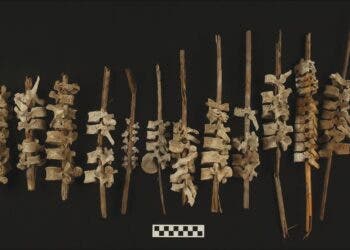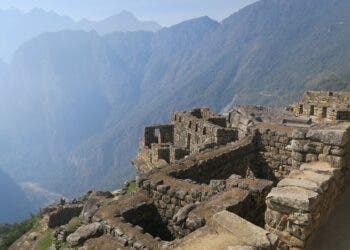
In the dry, wind-swept highlands of Bolivia, a dusty hill overlooked by archaeologists and tourists alike has revealed one of the most significant ancient discoveries in South America in recent years: a massive, ceremonial temple hidden in plain sight. Long known to local farmers but never formally studied, researchers now identified this hilltop as the Palaspata temple — a sacred and strategic outpost built by the Tiwanaku civilization over a millennium ago.
The finding reshapes what researchers thought they knew about the reach and organization of one of the Andes’ most powerful yet enigmatic pre-Inca societies.
A Long Underestimated Civilization
The Tiwanaku civilization flourished near the Southern shores of Lake Titicaca from around 500 to 1000 CE, leaving behind impressive stone architecture, monoliths, and terraced temples. At its height, Tiwanaku’s influence stretched across what is now Bolivia, Peru, Chile, and even Argentina. But scholars have long debated how centralized (or scattered) this pre-Columbian state truly was.
“Their society collapsed sometime around 1000 CE and was a ruin by the time the Incas conquered the Andes in the 15th century,” said José Capriles, an associate professor of anthropology at Penn State and the lead author of a new study published in Antiquity.
Palaspata carves Tiwanaku’s deliberate and infrastructural expansion into the Southeastern highlands into stone, leaving no room for inference. This was a resourceful and advanced civilization.
Sacred Architecture, Strategic Geography

The Palaspata temple lies 215 kilometers Southeast of Tiwanaku’s capital, in a place few archaeologists had previously considered. But its position turns out to be ideal. It’s the convergence point for three major ecological zones: the high plains of Lake Titicaca, the llama-herding Altiplano to the West, and the fertile Cochabamba valleys to the East.
“This discovery is vital for our community, and we believe its documentation will be invaluable for promoting tourism and showcasing our region’s rich history,” said Justo Ventura Guarayo, mayor of Caracollo, the municipality that now hosts the site.
Constructed atop a ridge plateau invisible from nearby roads, the Palaspata complex spans about the size of a city block: 125 meters by 145 meters. It features 15 quadrangular enclosures arranged around a central sunken courtyard, a design that mirrors Tiwanaku’s hallmark temples near Lake Titicaca, including the monumental Kalasasaya.
The builders aligned the entire temple with the solar equinox, suggesting it played a role in astronomical rituals. Its Western entrance would have faced the setting sun during ceremonial events.
A Gateway, Not a Colony
This was no mere provincial shrine. According to the researchers, Palaspata functioned as a gateway node, an administrative and ritual hub that anchored Tiwanaku’s expansion Eastward.
“People moved, traded and built monuments in places of significance throughout the arid mountain landscape,” Capriles explained. “Most economic and political transactions had to be mediated through divinity, because that would be a common language that would facilitate various individuals cooperating.”
Fragments of keru drinking cups were found across the site, remnants of feasts involving chicha, a traditional maize beer. Maize does not grow at the site’s altitude, implying it was brought in from the lower Cochabamba valleys — clear evidence of long-distance trade and integration.
Other artifacts, including obsidian blades, turquoise fragments, marine shells, and exotic ceramics from multiple regions, hint at far-reaching connections that once converged here.
Revealing a Lost Andean Network
The temple is only part of a larger story. Archaeological work at nearby Ocotavi 1 site revealed residential structures, Tiwanaku-style burials, and a dense accumulation of artifacts, suggesting a sprawling 75-hectare settlement that likely included Palaspata, Ocotavi, and the Cayhuasi plain below.
Radiocarbon dating places the main occupation from about 630 to 950 CE, right in the heart of Tiwanaku’s expansionist phase. The site appears to have persisted even after Tiwanaku’s decline, with some burials and ritual activity continuing into the 13th century.
“This large, symmetric, modular construction also recalls sites such as Pikillacta, Azángaro and other contemporaneous Wari administrative outposts,” the study’s authors wrote. Unlike smaller ceremonial centers, Palaspata was designed to impress, mediate, and manage, both spiritually and materially.
For decades, archaeologists have tried to understand whether Tiwanaku operated like a true state or merely as a religious and cultural structure with loose affiliations. The discovery of Palaspata tilts the scale toward a more centralized, state-like model, one that invested in major infrastructure to control trade routes and bind distant populations.
“There’s still so much to discover that we don’t know about, and that could be hiding in plain sight,” Capriles said. “It just requires opening your eyes to see what’s out there.”
Ancient Stones, Modern Significance
The mayor of Caracollo and local authorities are now working with national agencies and archaeologists to protect the site from looting, development, and erosion. At the same time, they hope Palaspata becomes a cultural touchstone for the region, drawing visitors and scholars alike.
As researchers continue to study the site, Palaspata may unlock more than just the mysteries of Tiwanaku’s Eastern frontier. It could become a cornerstone in a broader understanding of how ancient societies in the Andes built networks of power not just through their military but through temples, trade, and the shared language of ritual.






